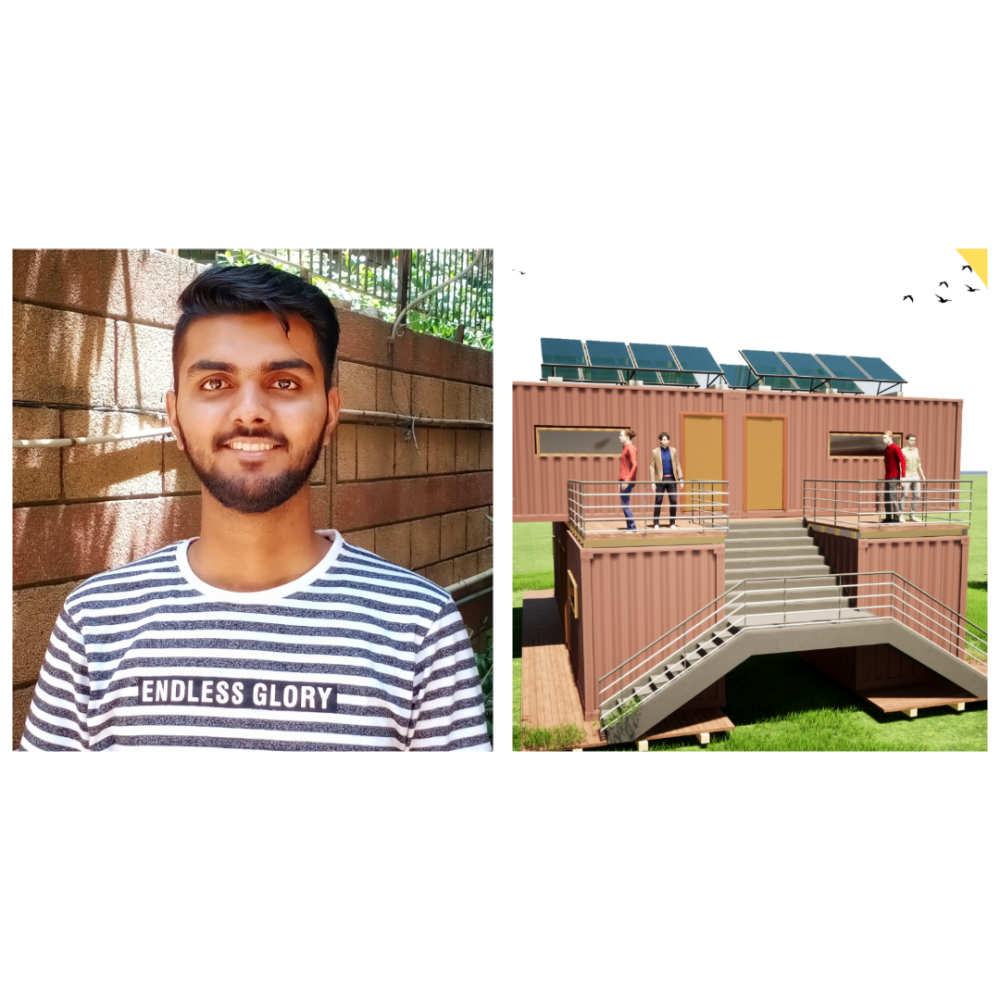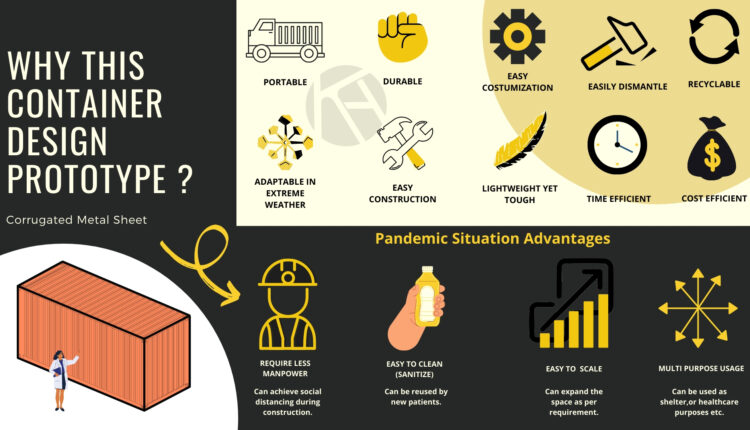As this Covid-19 pandemic engulfed the world’s population, many countries started facing space crunches in their hospitals, owing to the magnanimous patient load, some were even forced to home-quarantine their patients. But amidst this news, an architecture student from Jamia Millia Islamia used his capabilities and decided to develop a project to tackle the rising numbers of corona patients and declining space for their treatment.
Meet Kaif Ali, a 20-Year old architecture student from Jamia Millia Islamia University with an idea to convert shipping containers into Quarantine shelters or make-shift hospitals to solve the issue of quarantine spaces. The design proposal for the COVID-19 pandemic is named SpaceEra– A standard SPACE developed for the pandemic ERA and beyond. The quarantine containers help to maintain social distancing and healthcare precautions advised by the medical bodies. What makes this space markedly different from other quarantine facilities are two factors: first, it covers 6 layers of social distancing throughout the whole concept for quarantine shelters. Second, the concept involves the multi-purpose use and easy to scale-up theories which are highly necessary for this pandemic period.
According to Ali’s idea, these PUF Panelled containers of size 2.5m x 6m can be used to form at least a 3-bed quarantine centre. These centres are portable and easily dismantlable structures made with corrugated metal sheet containers. These containers can also be customized easily to build quarantine centres and hospital isolation wards, claimed the 4th year student. KAIF had pitched in his design idea to various national and international agencies including the United Nations High Commissioner for Refugees (UNHCR). He suggested the use of these customized containers to build shelters for refugees. His idea was also applauded by then HRD Minister of India, Shri Ramesh Pokhriyal Nishank.
“Each container is cuboid in shape and is easy to construct, portable, and has economically adaptable structures. Around 8 containers can be stacked up to create a 24-bed quarantine facility. A single container can be used to create 4 toilet units for the user. These units can be built up in open spaces like DDA Parks near Corona hotspots, and also large parking areas, as it only requires 140 square meters of area,” explained Kaif Ali.

Ali has sent his design proposal to all state governments for consideration and claims to have a response from the Karnataka government in India and several architects worldwide. Elucidating his idea, the 4th year student explains, “The Idea proposal was made for Indian Context but is adaptable for Worldwide Execution.” He also wanted to use the prototype as a flood relief camp for flood-prone regions such as Assam. While that may seem not workable right now, but his idea has been appreciated and now in a full-fledged mode in Lagos, Nigeria. He is currently working under an organization in Nigeria to create a 200-bed COVID facility in Lagos, using shipping containers but in a more professionally-executable way. The project is set to be completed until October 2020.
The prototype isn’t only high on innovation but also meets the Sustainable Development Goals (SDG) set by the United Nations i.e.
GOAL 3: Good Health and Well-being
GOAL 6: Clean Water and Sanitation
GOAL 9: Industry, Innovation, and Infrastructure
GOAL 11: Sustainable Cities and Communities
And thus, has won many awards and nominations for the same such as Best design project by PreprLab, California, USA, The project has won D’source corona challenge at IIT Bombay, Mumbai, One in a Million Award by Multiplying Good (New York, USA), Award by Smart Habitat Foundation(Delhi, India) and has been shortlisted for many others.
On being asked for his message to his fellow students and young inventors, Kaif Ali replied that we all have an idea from our respective fields that can make a difference and is beneficial for society. We just have to initiate. We all have the potential to inspire.
For more such stories explore our Inspiring Section









